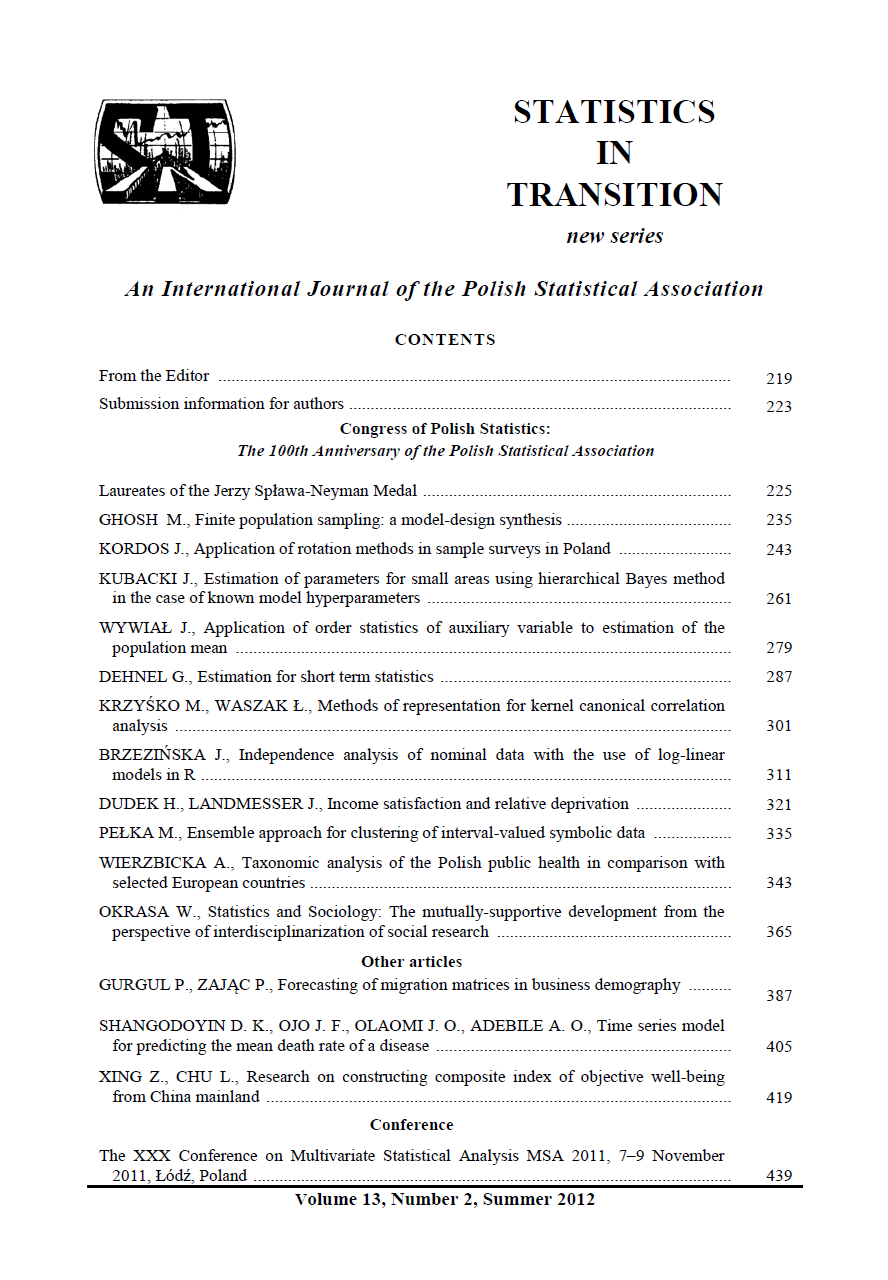ARTICLE
ABSTRACT
Estimation of the population average in a finite population by means of sampling strategies dependent on an auxiliary variable highly correlated with a variable under study is considered. The sample is drawn with replacement on the basis of the probability distribution of an order statistic of the auxiliary variable. Observations of the variable under study are the values of the concomitant of the order statistic. The mean of the concomitant values is the estimator of a population mean of the variable under study. The expected value and the variance of the estimator are derived. The limit distributions of the considered estimators were considered. Finally, on the basis of simulation analysis, the accuracy of the estimator is considered.
KEYWORDS
Order statistic, sample quantile, auxiliary variable, sampling scheme, sampling design, concomitant.
REFERENCES
ARNOLD, B.C., BALAKRISHNAN N., NAGARAJA H.N. (2008). A First Course in Order Statistics. Society for Industrial and Applied Mathematics. Philadelphia.
BILLINGSLEY, P. (1979). Probability and Measure. John Wiley & Sons, New York-Chichester-Brisbane- Toronto.
DAVID, H.A., NAGARAJA, H.N. (2003). Order statistics. John Wiley & Sons.
HANSEN, M.H., HURVITZ, W.N. (1943). On the theory of sampling from finite population. Annals of Mathematical Statistic, 14, 333-362.
TILLE, Y. (2006). Sampling algorithms. Springer.
WYWIAŁ, J.L. (2008). Sampling design proportional to order statistic of auxiliary variable. Statistical Papers vol. 49, Nr. 2/April, pp. 277-289.
